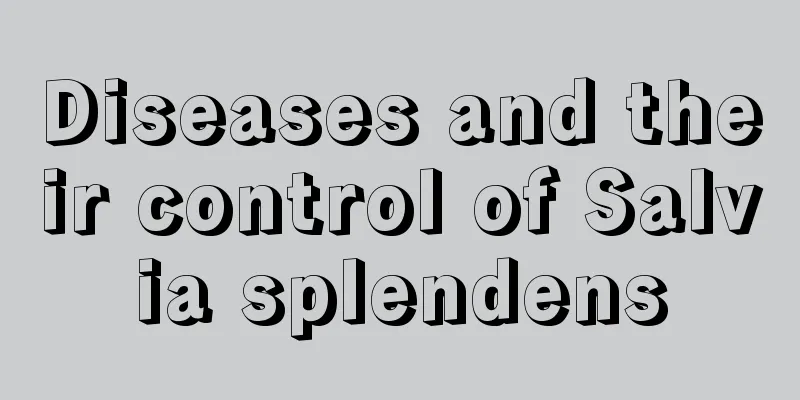Diseases and their control of Salvia splendens

Red sage leaf virus diseasesymptomWhen the plant is infected, the main symptoms are on the leaves, with dark and light mosaic or mottled spots. The leaves become wrinkled, smaller, and brittle. The plants become dwarfed and clumped, and the flower spikes become shorter. Aphids are closely related to the occurrence of diseases. In addition, grafting can also transmit viruses. Prevention and treatment measuresDuring the growing season, it is necessary to prevent and control aphids. Use 1000 times diluted 40% Dimethoate, 1000 times diluted 50% Marathon or 1000 times diluted 90% Trichlorfon for prevention and control. Remove surrounding weeds to reduce sources of infection. Destroy diseased plants promptly. In the early stage of the disease, 400 times diluted 20% Virus Ling can be applied about 2-4 times. Choose healthy plants as seed mother plants or choose seed propagation. Leaf spot and downy mildew of Salvia splendenssymptomLeaf spot disease is caused by factors such as ground moisture, temperature, severe shade, and long-term lack of ventilation, which causes the leaves of the impatiens to rot. Measures should be taken in time. Mildew blight is a devastating disease of salvia officinalis. It has a wide range of damage and will affect the flower stems, branches and leaves. It has a high incidence rate and develops rapidly, causing the death of a large number of flowers. After the plant is infected, in the early stage of the disease, water-soaked, dark green, irregular spots will appear on the infected parts of the stem, which will then gradually expand and spread upward. In the later stage of the disease, the spots turn dark brown with unclear edges. It will soon spread to the middle part, and even spots will appear on the top. When the disease is serious, the entire stem will turn black. Leaf damage mostly occurs at the leaf margins and bases, and leaves wilt when petioles are damaged. Prevention and treatment methodsMainly control the humidity and avoid planting too densely. During the rainy season, do a good job of drainage and potting, and pay attention to ventilation. When watering, prevent soil from splashing onto the leaves. Water the leaves less. Destroy diseased plants promptly. In addition, about 5g-10g of 70% pentachloronitrobenzene powder can be sprayed every day to disinfect the soil, which can help prevent the spread of the virus. In the early stage of the disease of Salvia officinalis, you can apply 600 times of mancozeb wettable powder or spray 700 times of 75% thiophanate-methyl wettable powder, and you can also spray the soil at the same time. |
<<: Common diseases and pests of dancing grass and their control
>>: Lemongrass leaf blight and its control
Recommend
What are the methods and precautions for cultivating lover's tears
Growth habits of Lover's Tears Lover's Te...
What is the function of plant flowers?
1. Reproduction The flowers of plants are the org...
How many days does it take for vegetables to germinate in this season?
Autumn is a suitable season for growing vegetable...
Environmental conditions and characteristics of asparagus fern growth
Environmental conditions and requirements for the...
Can the green treasure tree be watered with beer?
Can the green treasure tree be watered with beer ...
How to propagate Impatiens and what to pay attention to
How to propagate Impatiens The main ways of propa...
How to grow iron tree
1. Maintain the environment 1. Soil: When breedin...
This way of growing flowers doesn't cost a penny. Don't be frugal to grow flowers anymore.
1. You can also have beautiful flower pots withou...
Shrimp fry breeding method
In the early stages of shrimp farming , the healt...
How to Make African Jasmine Bloom
1. Supplement sunlight Sunlight is the first fact...
Cultivation methods and precautions of small ball roses
How to grow small roses Pot soil requirements The...
How to trim golden marbles
When to trim the golden marble It is best to prun...
When planting roses on a closed balcony, you need to be careful about these points
soil (Author: JavieraJoyce Source: Rose Bar) As t...
Diseases of Thunb. chinensis and their control
The harm of the witches' broom disease of the...
The efficacy and function of pearl spider plant
1. Ornamental value As a kind of succulent, the r...









